
Red Faction is a first-person shooter video game developed by Volition and published by THQ for PlayStation 2 and Microsoft Windows in 2001, and Macintosh platforms in 2002. A version for the N-Gage was developed by Monkeystone Games, and the mobile version was developed by Blue Beck. The game was inspired by several works of contemporary science fiction.

Worms Armageddon is a 1999 turn-based strategy video game developed and published by Team17. It was originally released for the Microsoft Windows operating system, and was later ported to the PlayStation, Dreamcast, Nintendo 64, and Game Boy Color. Worms Armageddon is the third installment in the Worms series. In the game, the player controls a team of up to eight earthworms tasked with defeating an opposing team using a wide range of weapons at their disposal. The game takes place on a destructible and customizable two-dimensional board and is characterized by cartoonish graphics and a unique brand of humour.

NBA Live 2000 is the 2000 installment of the NBA Live video game series. The cover features Tim Duncan of the San Antonio Spurs. The game was developed by EA Sports and released in 1999. Don Poier is the play-by-play announcer with Reggie Theus on color commentary. The game features Michael Jordan in his first official appearance in the series. The PC version of the game introduced EA's "Face in the Game" feature, allowing players to use custom facial photographs on created players. It was also the final NBA Live game released for Nintendo 64. NBA Live 2000 is followed by NBA Live 2001. A cancelled Game Boy Color version was in development by Handheld Games for THQ, but it was scrapped during testing.

Summoner is an action role-playing game developed by Volition and published by THQ. It was released as a launch title for the PlayStation 2 in 2000, and was subsequently ported to Microsoft Windows and Mac OS the following year. In the game, the player plays the role of Joseph and can assemble a team of compatriots and summon powerful monsters. The game has a world map, involved storyline, and unique hybrid combat system involving real-time and turn-based mechanisms.
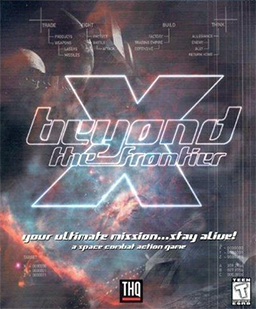
X: Beyond the Frontier is a video game created by Egosoft for Windows. The first of the X series, it is a space trading and combat simulator game, mostly set in the fictional X-Universe. Upon release, it was frequently compared to the older Elite.

FIFA 2000 is a football simulation video game developed by EA Canada and published by Electronic Arts. It was the seventh game in the main FIFA series. The game was released for Microsoft Windows and PlayStation. A version was also released for the Game Boy Color, developed by Tiertex Design Studios and published by THQ.

Madden NFL 2001 is an American football video game. It is the third in the Madden NFL series to include an NFL player, Tennessee Titans running back Eddie George, on its cover. In addition, it is the first game in the series to have a player, instead of John Madden featured prominently on the box art. Madden's picture is shown on a small logo, which would reappear for every following game until Madden NFL 06. It is also the first game in the Madden NFL series to appear on the PlayStation 2 game console. This is the first Madden game to feature NFL Europe teams.

Madden NFL 2000 is a football video game. This was the second of the Madden NFL games to not solely feature John Madden on the cover in North America. The only other one was Madden NFL '95. Most versions of the game cover featured Madden prominently in the foreground, and a recognizable Barry Sanders in a background action graphic. The European PAL edition features only Dorsey Levens on the cover.

Incoming is a 3D shooter video game developed by Rage Software and published by Interplay. The game was first released for Microsoft Windows in mid-1998, and was followed by a Sega Dreamcast version, which was released in Japan on December 17, 1998, in Europe on October 14, 1999, and in North America on September 15, 1999. Set in the near-future of 2009, the game primarily revolves around controlling vehicles and turrets to fight alien invaders of Earth in one of the campaign modes, the arcade mode, and with or against another player. Some levels include brief real-time strategy segments.
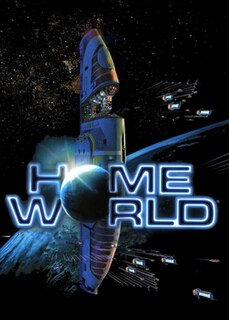
Homeworld is a real-time strategy video game developed by Relic Entertainment and published by Sierra Studios on September 28, 1999, for Microsoft Windows. Set in space, the science fiction game follows the Kushan exiles of the planet Kharak after their home planet is destroyed by the Taiidan Empire in retaliation for developing hyperspace jump technology. The survivors journey with their spacecraft-constructing mothership to reclaim their ancient homeworld of Hiigara from the Taiidan, encountering a variety of pirates, mercenaries, traders, and rebels along the way. In each of the game's levels, the player gathers resources, builds a fleet, and uses it to destroy enemy ships and accomplish mission objectives. The player's fleet carries over between levels, and can travel in a fully three-dimensional space within each level rather than being limited to a two-dimensional plane.

Disciples: Sacred Lands is a turn-based PC strategy game published by Strategy First in 1999. Set in a fantasy world known as the Sacred Lands, it depicts a battle for dominance between four races of the world of Nevendaar: The Empire (humans), the Mountain Clans (dwarves) the Legions of the Damned (demons), and the Undead Hordes (undead). In 2001, an expanded version of the game was released titled Disciples: Sacred Lands - Gold Edition. It added 25 new scenarios.
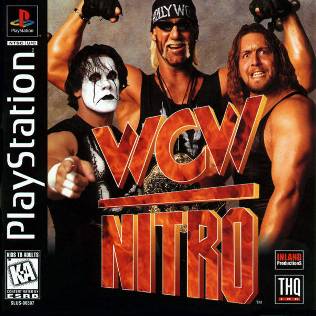
WCW Nitro is a professional wrestling video game based on the television show WCW Monday Nitro. Released by THQ for the PlayStation game console in 1998, the game featured a large roster of playable WCW wrestlers as well as full motion video clips of the television show. The game was followed by WCW/nWo Thunder, which was based on Nitro's Thursday night counterpart. Ports for Nintendo 64 and Microsoft Windows were released later in 1998 and 1999 with the updated roster featured in Thunder.
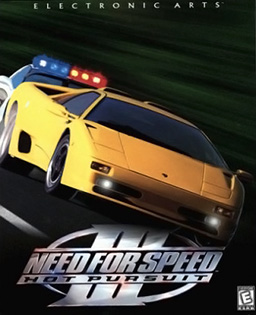
Need for Speed III: Hot Pursuit is a 1998 racing video game developed for PlayStation by EA Canada and Microsoft Windows by EA Seattle, and published by Electronic Arts. It is the third major installment in the Need for Speed franchise, incorporating police pursuits as a major part of gameplay. Hot Pursuit remains focused on racing using exotic sports cars, but features races that primarily take place in locations within North America, including varied settings and climates. Police AI is improved over the first game, utilizing several tactics to stop both the player and opponent. The PlayStation version was released on March 25, 1998, while the Windows version was released on October 12 the same year. The game received critical success for its time, with praise for its graphics and fast action. It received a direct sequel in 2002 and a reboot in 2010.

NHL 99 is an ice hockey video game developed by Electronic Arts Canada. It was released on September 30, 1998 and was the successor to NHL 98. The game boasted great improvements to the game from NHL 98. However the next two editions feature small improvements from this game thus making this game similar to NHL 2000 and NHL 2001. It was the first and only installment of the NHL series to be released on Nintendo 64.

Brunswick Circuit Pro Bowling is a sports video game game released for Microsoft Windows and PlayStation in 1998 and the Nintendo 64 in 1999.

Motorhead: High Velocity Entertainment is a racing video game developed by Digital Illusions CE AB for PlayStation and Microsoft Windows.
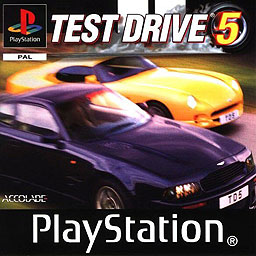
Test Drive 5 is a racing video game developed by Pitbull Syndicate and published by Accolade for PlayStation and Microsoft Windows in 1998.

Jane's World War II Fighters is the 1998 combat flight simulation video game. Set in the European theatre of operations during World War II, it is part of the Jane's Combat Simulations franchise. The game was considered a commercial failure, and contributed to the end of the Jane's Combat Simulations line.

Superbike 2001 is a motorcycle racing video game developed by Milestone srl, published by Electronic Arts (EA), and released in 2000 for Microsoft Windows. It is part of EA's Superbike video game series.




















